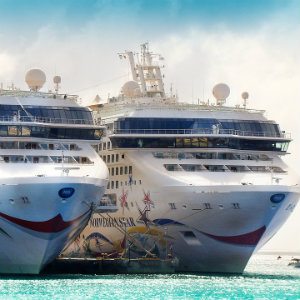It has been just five years since the Costa Concordia capsized and sank off of the coast of Tuscany on January 13th, 2012, but the memory of this tragic event is still fresh in the minds of vacationers across the globe – and for good reason. Not only were hundreds of people injured but more than 30 passengers lost their lives in an accident that could have easily been avoided.
You might ask, why are we talking about the Titanic? Yes, it is one of the most famous cruise ship disasters of all time. Yes, there was a major motion picture that won eleven awards that depicted the horrific event. But it sank over 100 years ago. Surely, our technology has progressed far beyond what that ship’s crew had available.
Yes, technology has far surpassed anything that the crew on board the Titanic would have ever even dreamed of. But human error has not changed.
For example, did you know that the Titanic was equipped with the most progressive wireless communications set of its time? There was a 40-foot electrical panel on the ship and antennae stretched between the ships tallest masts – nearly 250 feet above the surface of the water. This system allowed Morse Code messages to be sent up to 500 miles in the day and almost 2,000 at night.
However, the passengers on board were so excited about the system that they absolutely exhausted the crew hired to man the communication board by sending messages to family and friends. So when the operator from another ship, the Californian, sent a message to the Titanic warning of icebergs ahead, the operator who received it, in his frustration at being interrupted while sending a message to Newfoundland, told the Californian man to “Shut up, shut up, I’m working Cape Race.”
It wasn’t even ten minutes later that the lookout on board spotted the iceberg which would ultimately cause the ship to sink.
To make matters worse, because of the rude answer that was given to the Californian, their operator shut the system down and went to bed for the evening. So when the Titanic started sending out distress calls, there was no one to hear them – even though the Californian was close enough to assist.
Also see our article about Falling Overboard: Here’s What You Need To Know.

While the Costa Concordia was equipped with the latest in GPS navigation and an alarm system, it still struck an underwater rock formation and sunk.
When an investigation into the accident took place, the captain, who survived the accident, admitted that he was so confident in experience and memory of the waters that he was sailing through that he had turned off the computer navigation system and was simply navigating the massive ship by sight.
Shocking testimony from his first officer also revealed that he had left his glasses in his room and repeatedly requested that someone else read the radar for him.
“I have to take responsibility for the fact that I made a judgment error.” said the captain. Ultimately, after a criminal trial of eighteen months, he was found guilty of thirty-two counts of manslaughter and sentenced to sixteen years in prison. In addition to this, numerous survivors decided to filed cruise ship accident lawsuits.
These disasters happen more often than most people realize. Cruise ships can be giant, transcontinental behemoths carrying thousands of passengers or they can be smaller ships, meant to carry a few hundred passengers for a day or two along riverways.
Just recently, a cruise ship in China sunk in the Yangtze River, killing more than 400 people. Only 14 survived.
Not only does human error contribute to the cause of the crash, but frequently, despite regulations, the ship is not equipped with all the necessary safety gear and the crew has not been properly trained on how to proceed if such an accident occurs.
According to the Cruise Lines International Association and the U.S. Coast guard, each cruise ship sailing from a U.S. port has periodic inspections throughout the year. On a typical large ship, which may carry around 3000 passengers and 1000 crew, the ship should have:
This is, of course, in addition to lifeboats that would be sufficient to carry every single person on board.
Despite all of this, when ships are in distress, passengers are seriously injured and killed, leaving victims and their loved ones wondering who they can turn to for help while they recover.
Unlike most accident or personal injury claims which typically allow the victims two to three years to file a lawsuit seeking compensation, cruise ship accidents have a much shorter statute of limitations. In most cases, if a claim isn’t filed within a year, the plaintiff loses their right to fight for compensation forever.
In many cases, whether the injuries sustained by the plaintiff were caused by a slip and fall accident, medical malpractice, or poor navigation, the company that owns the ship will approach the plaintiff with an offer to settle. Whatever you do, don’t sign anything or agree to settle.
Typically these offers are meant to make a large problem go away quickly and are not as large as the plaintiff needs or deserves. That’s not to say that the case won’t end with a settlement, however, it’s best to let an attorney negotiate a higher settlement or take the matter before the court.
Continue reading The Dangers Of Dark Premises.